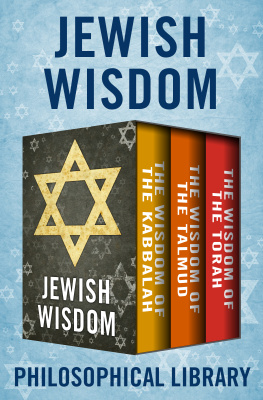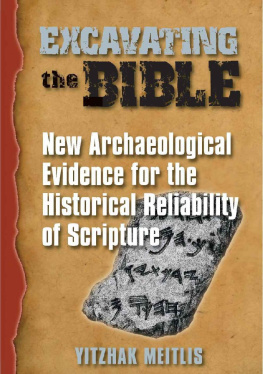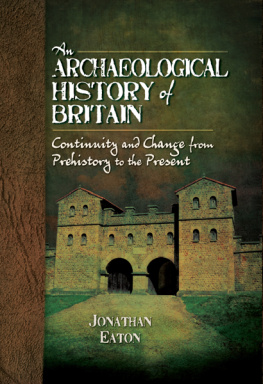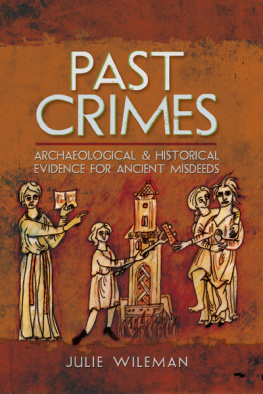The Origins of Judaism
THE ANCHOR YALE BIBLE REFERENCE LIBRARY is a project of international and interfaith scope in which Protestant, Catholic, and Jewish scholars from many countries contribute individual volumes. The project is not sponsored by any ecclesiastical organization and is not intended to reflect any particular theological doctrine.
The series is committed to producing volumes in the tradition established half a century ago by the founders of the Anchor Bible, William Foxwell Albright and David Noel Freedman. It aims to present the best contemporary scholarship in a way that is accessible not only to scholars but also to the educated nonspecialist. It is committed to work of sound philological and historical scholarship, supplemented by insight from modern methods, such as sociological and literary criticism.
John J. Collins
General Editor
THE ANCHOR YALE BIBLE REFERENCE LIBRARY
The Origins of Judaism
An Archaeological-Historical Reappraisal
YONATAN ADLER

Yale UNIVERSITY PRESS
NEW HAVEN AND LONDON
Anchor Yale Bible and the Anchor Yale Bible logo are registered trademarks of Yale University.
Copyright 2022 by Yonatan Adler.
All rights reserved.
This book may not be reproduced, in whole or in part, including illustrations, in any form (beyond that copying permitted by Sections 107 and 108 of the U.S. Copyright Law and except by reviewers for the public press), without written permission from the publishers.
Yale University Press books may be purchased in quantity for educational, business, or promotional use. For information, please email (U.K. office).
Set in Adobe Caslon and Bauer Bodoni type by Newgen North America. Printed in the United States of America.
Library of Congress Control Number: 2022931886
ISBN 978-0-300-25490-7 (hardcover : alk. paper)
A catalogue record for this book is available from the British Library.
This paper meets the requirements of ANSI/NISO Z39.48-1992 (Permanence of Paper).
10 9 8 7 6 5 4 3 2 1
Dedicated with love to Netanel, Emuna, Avital, Techiya, Elyada, and Aviya
Contents
Preface
The biblical tradition provides a sweeping narrative, spanning the course of a millennium, about the reception of the Torah among the people of Israel. The account begins when the God of Israel first gives his set of laws to Moses at Mt. Sinai and continues until the time when Ezra and Nehemiah bring about a restoration of this Torah in Persian-era Jerusalem. This is a chronicle of discontinuities, characterized by long periods when the Torah was entirely neglected, but punctuated by intermittent episodes of rediscovery and restoration at the hands of virtuous leaders. Already before Moses descends from the mountain, the people transgress by setting up a golden calf. Subsequent prophets through the centuries repeatedly scold Israel for its various iniquities, and time after time the nation is punished for its sins. This dim narrative of disobedience is punctuated now and again when a righteous leader returns the people to observance of the Torahs laws. Jehoshaphat, for example, sends teachers throughout the land to teach Torah to the people (2 Chr 17: 79). Hezekiah restores observance of the Passover, as it had not been celebrated since the days of Solomon son of David, king of Israel (2 Chr 30:26). Josiah similarly restores observance of the Passover, as it had not been offered since the days of the judges who judged Israel nor in all the days of the kings of Israel and the kings of Judah (2 Kgs 23:22; see also 2 Chr 35:18). On the authority of a Persian king, Ezra arrives in Jerusalem and publicly expounds from a long-forgotten Torah, restoring observance of Sukkot rites that had been neglected from the days of Jeshua son of Nun to that day (Neh 8:17). And finally, Nehemiah discovers the populace of Persian-era Jerusalem negligent of the Sabbath and immediately sets about to restore proper observance of the day (Neh 13:1522).
This biblical tradition is certainly not history in the modern sense of the word. History, from the ancient Greek histora, refers to the open-ended, methodical investigation into questions that people in the present choose to pose about the past. That the biblical tradition was never history becomes abundantly evident when we consider the fact that the tradition provides no citations, includes no footnotes, and affords no bibliographic lists of sources. Rather than a methodical inquiry into the past, the biblical tradition about Israels reception of the Torah is very much a living declaration in the present, a call to action in the here and now. It proclaims that the Torah is divine, and as such its commandments are sacred and to be kept assiduously. It warns against complacency, as the Torah is liable to be ignored and even forgotten if sufficient care is not taken to maintain its continual observance. It comforts that even if transgression occurs, full repentance through restoration of Torah observance is always possible. Its message is acutely relevant to the lives of those who inherited the tradition, and it adjures those who have thus received it to pass it onward as a legacy to subsequent generations.
As a call to action in the present, the biblical tradition about how the Torah came to be observed by Israel is undeniably true in the deepest, most fundamental sense of the word. It is this tradition that has fostered not only the survival but also the astonishing development and flourishing of Jewish communities throughout the many centuries of frequently recurring persecutions and hardships. To paraphrase the Hebrew thinker Ahad Haam (18561927), more than the Jewish people have kept the Torah, the Torah has kept the Jewish people. Undoubtedly, the biblical tradition about the early reception of the Torah has served as the bedrock of Jewish identity, and hence existence, through the generations.
Despite its crucial place in forging the Jewish past and present, the biblical tradition about the origins of the Torah and how it came to be observed is decidedly not the point of departure of the book that is before you. The biblical account has been studied in the past from countless angles, both traditional and critical, and doubtless will continue to be a subject of intense interest well into the future. As crucial as the biblical tradition has been as a call to action throughout the millennia, it will not be subject to investigation within the framework of the present study.
Instead of the biblical tradition about Israels reception of the Torah, this book takes as its starting point the lived experiences of the Jewish people as they have actually practiced their Judaism over the centuries through the observance of the laws of the Torah in their everyday lives. It is this practical Judaism, rather than the biblical tradition about it, that stands at the center of the present book. The aim of this study is to apply systematic historical and archaeological methods to seek the earliest evidence for the emergence of precisely this practical Judaism within the routine lives of ordinary people in antiquity.
The title of this book announces that it will conduct a reappraisal of Judaisms origins. What is to be reappraised here is not the biblical tradition, however, which as I have just explained will not be subject to investigation. Rather, my aim is to reevaluate a certain scholarly hypothesis, dating back to the nineteenth century but still current today, that locates the emergence of Judaism in the so-called postexilic period.
The Origins of Judaism is actually a play on the title of a volume published by Eduard Meyer in 1896,
Next page






